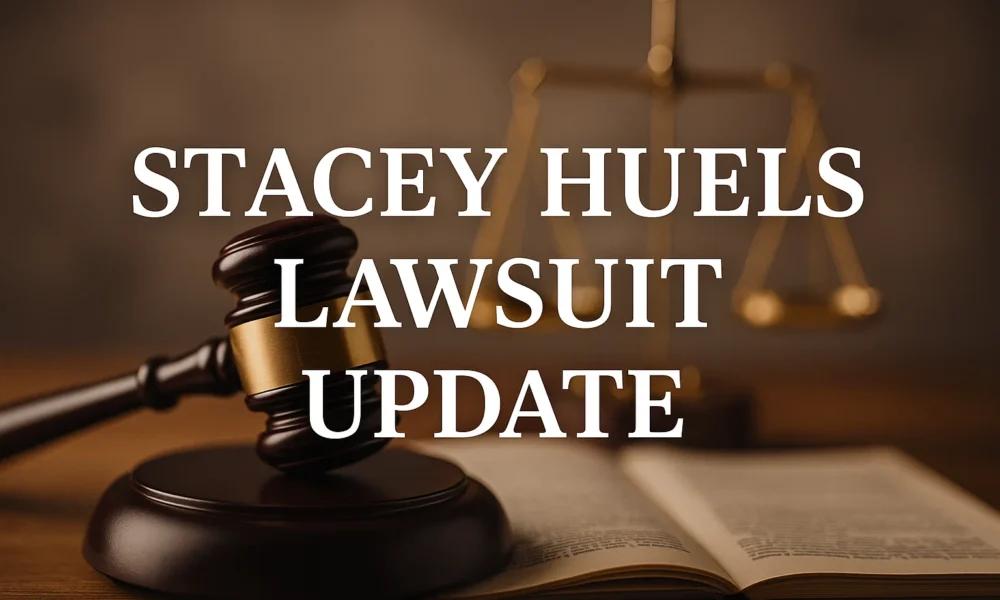The legal landscape is shifting, and the Stacey Huels lawsuit has emerged as a pivotal case that could reshape future court rulings. As public interest grows around this high-profile litigation, many are asking: what does this mean for our justice system? The implications extend far beyond one individual’s fight in the courtroom. With powerful arguments from key players and ethical considerations at stake, we find ourselves on the brink of significant changes to legal precedents. Dive into the details of this landmark case and explore how it may influence similar lawsuits in years to come.
What is Stacey Huels Lawsuit?
The Stacey Huels lawsuit emerged as a significant legal battle that captivated public attention. It revolves around complex issues of liability and negligence, raising questions about accountability in certain sectors.
Huels, a determined plaintiff, asserts that her rights were violated following an incident that led to severe repercussions. The case’s details highlight the intricacies involved in navigating personal injury laws.
Both sides have presented compelling arguments. Huels claims the negligence of a prominent defendant caused lasting harm. Conversely, the defense challenges these assertions by questioning the evidence and circumstances surrounding the event.
This lawsuit serves as a critical juncture for many who follow legal developments closely. Its outcomes could redefine aspects of civil law and set new benchmarks for similar cases across various jurisdictions.
Background information on the case
The Stacey Huels lawsuit emerged from a complex situation that unfolded over several years. At the heart of this case is an alleged breach of contract involving multiple parties.
Huels, a former employee at a prominent firm, claimed she was wrongfully terminated after raising concerns about unethical practices within the organization. Her allegations included discrimination and retaliation, which led her to seek legal recourse.
The lawsuit gained attention not just for its content but for its broader implications. Media coverage highlighted the challenges faced by whistleblowers in corporate environments.
As proceedings began, both sides presented compelling arguments reflecting their positions. The complexity of employment law became evident as various statutes were invoked throughout the trial process. This backdrop set the stage for significant discussions on workplace ethics and employee rights moving forward.
Key players and their arguments
The Stacey Huels lawsuit features several key players, each bringing distinct perspectives to the table. At the forefront is Stacey Huels herself, who argues that her rights were violated under specific legal statutes. Her case centers on personal accountability and broader social implications.
On the opposing side stands a well-resourced legal team representing the defendants. They argue for compliance with existing laws and emphasize procedural correctness throughout the process. Their stance highlights concerns about potential overreach if Huels’ claims are upheld.
Legal experts and analysts have also entered the fray, offering insights into how this case could reshape interpretations of relevant laws. This dynamic interaction between all parties adds depth to ongoing discussions in courtrooms across the nation. Each argument contributes to a larger narrative concerning justice and individual rights within our legal framework.
Impact on future legal precedents
The Stacey Huels lawsuit is poised to reshape future legal precedents significantly. It could establish new benchmarks in how courts interpret liability and negligence.
As the case unfolds, the judicial reasoning applied by the presiding judge may influence similar cases nationwide. Legal experts are already analyzing potential outcomes that might redefine responsibility standards in various sectors.
Should the court side with Huels, it could lead to more stringent regulations for businesses regarding safety protocols. This outcome would prompt companies to reevaluate their practices proactively rather than reactively.
Conversely, a ruling against her may embolden corporations, allowing them greater leeway in avoiding accountability. The implications of this case extend far beyond its immediate context; they ripple through our legal system’s fabric.
All eyes are on this pivotal moment as stakeholders anticipate its lasting effects on future litigation strategies and societal norms regarding justice.
Potential implications for similar cases
The Stacey Huels lawsuit could set a significant benchmark for future cases. Legal experts are closely watching how this case unfolds, as it may influence rulings in similar lawsuits.
One potential implication is the establishment of clearer standards regarding liability and responsibility. If the court sides with Huels, we might see more plaintiffs emboldened to take legal action under comparable circumstances.
Moreover, this case could encourage lawmakers to revisit existing statutes. They may feel pressured to refine or create laws that address gaps highlighted during the trial.
Additionally, public sentiment surrounding the case could sway juries in upcoming trials. As media coverage intensifies, societal perceptions will play a crucial role in shaping outcomes for litigants facing analogous issues.
These developments suggest a new landscape for litigation where precedents are not just followed but actively challenged and redefined.
Ethical considerations
The Stacey Huels lawsuit brings several ethical considerations to the forefront. Central to this case is the balance between individual rights and broader societal impacts.
One major question revolves around accountability. When does personal responsibility give way to systemic failures? This case challenges us to consider how institutions protect individuals from harm, both physically and emotionally.
Additionally, there’s the issue of transparency. How much information should be disclosed in legal proceedings? The public’s right to know often clashes with privacy concerns, creating a complex ethical landscape.
Furthermore, we must contemplate the role of media coverage. Sensationalized reporting can distort perceptions of justice and fairness, influencing public opinion before evidence is even presented in court.
These factors compel us to reflect on our values as they intersect with law. What are we willing to sacrifice for justice? Each decision made during this trial could set a precedent that resonates far beyond its immediate impact.
What this lawsuit means for the future of the legal system
The Stacey Huels lawsuit has ignited conversations about accountability and transparency within the legal system. As more individuals become aware of their rights, cases like this encourage a culture where seeking justice isn’t just an option—it’s a necessity.
This case may set a precedent for future lawsuits involving similar circumstances. Courts might lean towards prioritizing individual rights over institutional practices, which can shift the balance in favor of plaintiffs.
Moreover, it could influence how attorneys approach cases moving forward. Legal strategies may evolve to incorporate lessons learned from this lawsuit, pushing for innovative arguments that resonate with juries and judges alike.
As society becomes increasingly interconnected through social media and digital platforms, public opinion will likely play a larger role in shaping legal outcomes. The ripple effects of this case are bound to be felt across different jurisdictions as courts navigate these complex waters.
Conclusion
The Stacey Huels lawsuit is a pivotal case that may redefine legal boundaries in various aspects. The outcome will likely influence not only the involved parties but also set new standards for future cases. As courts navigate through evolving societal norms and ethical dilemmas, precedents established here could resonate far beyond this individual situation.
As we observe the unfolding consequences of this lawsuit, its implications extend into broader discussions around justice and accountability. Legal professionals, scholars, and those engaged in policy-making will undoubtedly analyze the outcomes closely for insights applicable to similar disputes.
While it’s uncertain how precisely these changes will shape our legal system going forward, one thing remains clear: the Stacey Huels lawsuit stands as a crucial moment in time. It invites us to reflect on our values and consider what we want from our legal institutions moving ahead. This case is more than just a singular event; it’s a stepping stone towards potential evolution within our judicial landscape.






